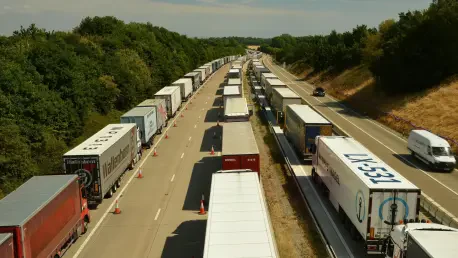I’m thrilled to sit down with Marco Gaietti, a veteran in management consulting with deep expertise in business management, strategic operations, and customer relations. Today, we’re diving into an exciting initiative by AkzoNobel, the company behind Dulux Paint, as they roll out electric heavy goods vehicles and a hydrotreated vegetable oil-powered fleet to transform their logistics in the UK. In this conversation, we’ll explore the motivations behind this sustainable shift, the environmental impact of these innovations, the strategic decisions shaping their approach, and how this aligns with broader sustainability goals. Let’s get started.
What inspired AkzoNobel to embark on this journey with electric trucks and an HVO-powered fleet?
The inspiration came from a deep-rooted commitment to sustainability and a recognition that transportation is a significant contributor to carbon emissions. AkzoNobel saw an opportunity to lead by example in the paint industry, especially in the UK, where regulations and public demand for greener practices are growing. It wasn’t just about meeting targets; it was about reimagining how they operate as a business. This initiative ties directly into their ‘Paint the Future’ vision, which focuses on innovation with sustainability at its core. They wanted to show that bold action today can create a lasting impact for tomorrow.
How do these new fleets contribute to measurable environmental benefits?
The impact is substantial. Together, the electric trucks and HVO-powered fleet are expected to save around 3,000 tonnes of carbon emissions annually. This comes from a combination of vehicle efficiency upgrades, the use of cleaner Euro 6 engines and electric vehicles, and the switch to HVO fuel, which alone accounts for about 2,000 tonnes of those savings. It’s like taking over 650 average cars off the road each year. Beyond carbon, the electric trucks operating in urban areas like London reduce noise pollution and improve air quality, which is a big win for densely populated regions.
Why did AkzoNobel opt for a dual approach with both electric trucks and HVO-powered vehicles instead of focusing on a single technology?
It’s all about playing to the strengths of each technology based on operational needs. Electric trucks are ideal for urban areas like Slough and London because they offer zero direct emissions and quieter operation, which is critical in cities with strict regulations and high population density. On the other hand, HVO fuel was chosen for nationwide operations because it’s a more practical solution for long-haul journeys where charging infrastructure for electric vehicles isn’t yet widespread. This dual strategy allows them to maximize carbon reductions across different types of routes while adapting to current infrastructure realities.
In what ways does this initiative align with AkzoNobel’s broader sustainability targets?
This fleet transformation is a key piece of their goal to cut Scope 1 emissions by 50% by 2030, using a 2018 baseline. It’s not just a standalone project; it builds on other efforts like sourcing 100% renewable electricity for their UK operations in 2024, which has already helped them achieve a 41% reduction in Scope 1 emissions that year. The new fleets are a tangible step toward decarbonizing their logistics, which is a critical part of their overall environmental footprint. It’s about creating a cohesive strategy where every aspect of the business contributes to those science-based targets.
What were some of the biggest challenges in rolling out these electric heavy goods vehicles and the HVO fleet?
One of the main hurdles was infrastructure, especially for the electric trucks. Charging stations for heavy goods vehicles aren’t as common as for passenger cars, so planning routes and ensuring uptime required a lot of coordination. There were also technical challenges in adapting to new vehicle technologies and training staff to handle them. Partnering with a logistics provider who shares their vision for sustainability was crucial—they worked closely to troubleshoot issues, test solutions, and ensure the transition was as smooth as possible. It took a lot of upfront investment and patience, but the payoff in emissions reductions made it worthwhile.
How does this fleet transformation benefit AkzoNobel’s customers?
Customers get to be part of a more sustainable supply chain without even lifting a finger. The fleets are delivering innovative products like low-emission paints, some of which are 99.9% VOC-free, alongside improved water-based options. This means customers can choose products that align with their own environmental goals while knowing the delivery process itself is greener. It’s a holistic approach—sustainability isn’t just in the product but in how it reaches them. Plus, in urban areas, quieter deliveries from electric trucks mean less disruption, which is a small but meaningful bonus.
What’s your forecast for the future of sustainable logistics in the manufacturing sector?
I believe we’re on the cusp of a major shift. Technologies like electric vehicles and alternative fuels like HVO are becoming more viable every day, and as infrastructure catches up—think more charging stations and better access to renewable fuels—we’ll see widespread adoption. Government policies and consumer pressure will keep pushing companies to decarbonize their supply chains, and I expect collaborative efforts between manufacturers and logistics providers to become the norm. The challenge will be balancing cost with impact, but innovators like AkzoNobel are proving it’s possible. In the next decade, sustainable logistics won’t just be a competitive edge; it’ll be a baseline expectation.









